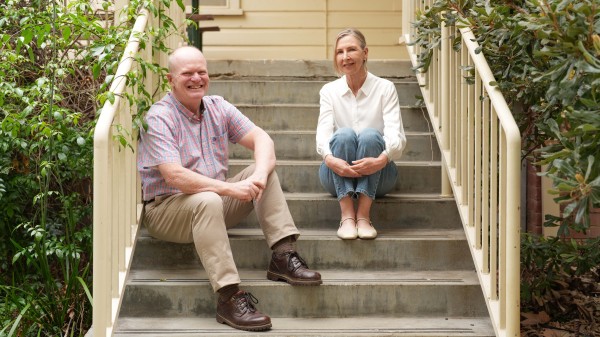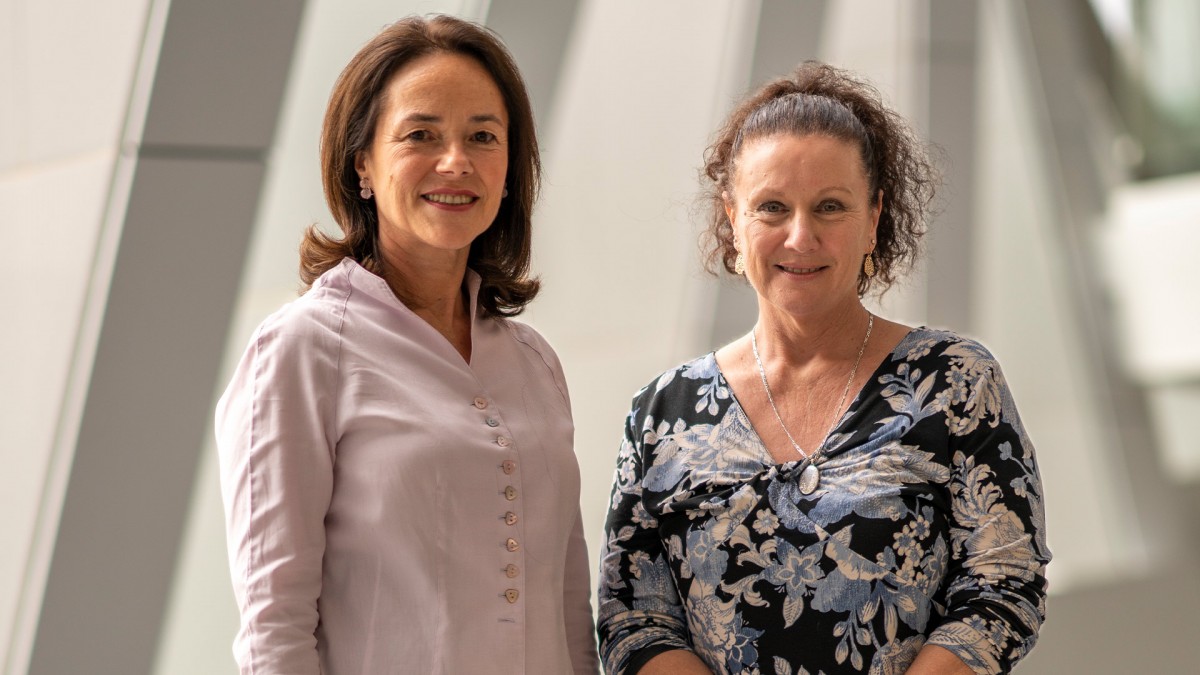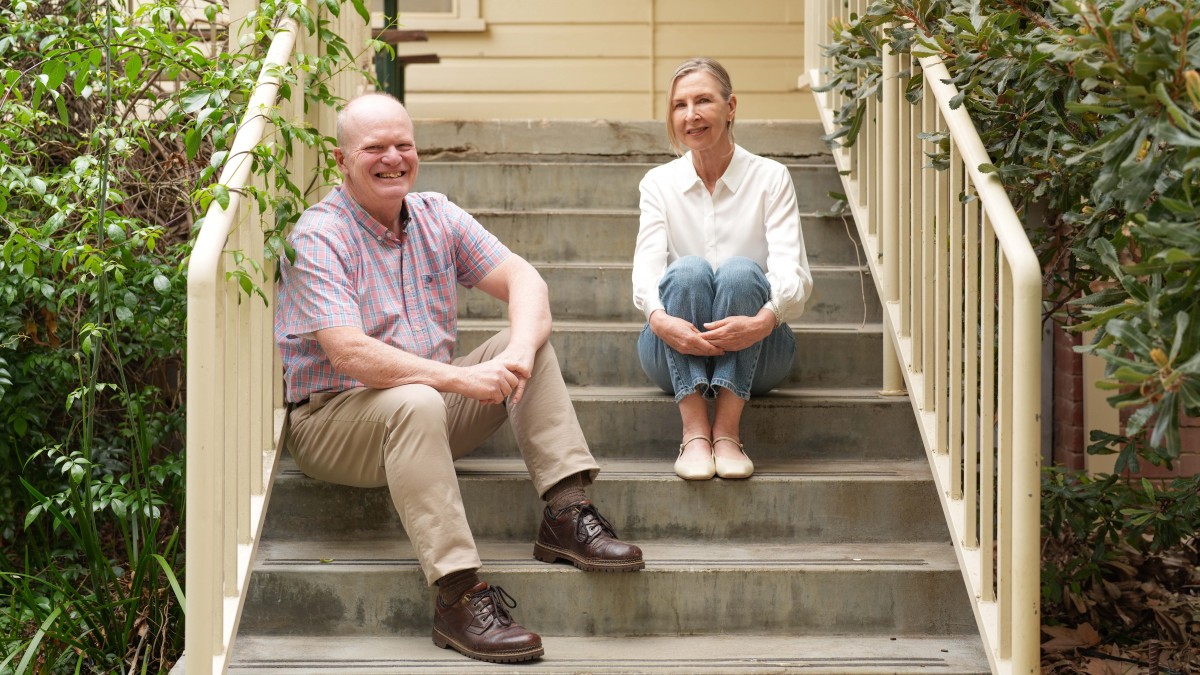Kathleen Folbigg’s release from prison made headlines around the world. Once branded “Australia’s worst female serial killer”, the bereaved mother’s freedom and official pardon were made possible by innovations in genetic science.
Like most scientists, Professor Carola Vinuesa has a drive to get to the truth and a determination to ensure it is understood. In service of this mission, the immunologist and world-renowned expert in genetic abnormalities spent more than five years trying to find and prove the truth behind the deaths of Folbigg’s four children.
But making the complex science of genomics, which she believed explained the tragedy, understood by the Australian legal system, was almost impossible.
Down to circumstance
Folbigg’s infants died aged between 19 days and 18 months, from February 1989 to March 1999.
In 2003, she was convicted of the murder of three children—Patrick, Sarah and Laura—and the manslaughter of Caleb. The sentence was 40 years in prison, reduced to a 25-year non-parole period on appeal.
These convictions were based on the prosecution’s assertion that she had smothered each of the children, despite there being no medical evidence to support the theory.
In fact, there was medical evidence that Folbigg’s two sons were sick at the time of their deaths. They had illnesses that could stop them from breathing.
“When Caleb died at 19 days in 1989, he had a floppy larynx and breathing difficulties,” Vinuesa says. “Patrick died at eight months in 1993 from airway obstruction due to epileptic fits, in turn due to an encephalopathy or brain disease, which had already led to blindness.
“Sarah’s death at 10 months in 1993 was classified as Sudden Infant Death Syndrome, or SIDS, by a process of elimination as there was no obvious cause. However, she had a lung infection prior to her death, confirmed by the autopsy.”
The death of Folbigg’s fourth child was recorded as “undetermined” because of her siblings’ history, despite the autopsy finding myocarditis, or inflammation of the heart muscle.
“Just two days before Laura died at 18 months in 1999, she had been treated for a respiratory infection, which is a trigger for arrhythmia,” Vinuesa says.
Folbigg’s husband, Craig Gibson Folbigg, gave her diaries, which included entries noting her stress and temper, to police later that year. However, it wasn’t until 2001 that she was arrested and charged with four counts of murder.
There was no physical evidence of smothering or other foul play in the babies’ deaths, but the diary entries were interpreted as incriminating and treated as sufficient circumstantial evidence to secure her convictions.
Too complex to be heard
In 2018, Vinuesa was approached by a lawyer, who had also undertaken an honours degree in her department several years before. He had not been able to interest other academics in the Folbigg case. But as Vinuesa’s research team based at the ANU John Curtin School of Medical Research was a pioneer of next-generation technology in Australia, she offered to sequence Folbigg’s entire genome. They used a saliva sample and a simple swab of her cheek.
This process wasn’t possible when Folbigg was convicted. At that time, only a handful of mutations were known to contribute to SIDS. However, it was also known that cardiac conditions causing sudden death could be genetic.
Furthermore, there was a clue hinting at cardiac issues in Folbigg’s own medical history. Over the years she had experienced several sudden fainting episodes, particularly with stress, which pointed to evidence of an irregular heartbeat.
Within a month, ANU researcher Dr Todor Arsov and Vinuesa found a mutation in Folbigg’s CALM2 gene, which is needed to make the calmodulin protein. The mutation means the calmodulin protein doesn’t work correctly.
Calmodulin has various jobs throughout the body, a key one being to regulate the movement of calcium and sodium in and out of heart cells, which is essential to maintaining a regular heartbeat.
As a result of the mutation, the channels that normally allow the entry and exit of calcium into the heart don’t close properly. A build-up of calcium can cause the heart to stop beating.
Vinuesa was aware of reported cases of other children dying suddenly due to CALM2 mutation. If this mutation was present in Folbigg, there was a strong chance it had also been passed on to her children.
“I was extremely excited at this extraordinary finding in Kathleen’s DNA,” she says. “‘This is probably it’, I thought.”
Vinuesa wrote a report for Folbigg’s lawyer, which was sent to the New South Wales Crown, saying that the genetic evidence warranted further investigation of Folbigg’s health and the childrens’ health.
As a result, full genetic sequencing was done for all four Folbigg children using DNA found in decades-old biological materials, including dry blood from newborn heal prick tests and frozen skin and liver cells from their autopsies.
“We found that Sarah and Laura had the CALM2 variant,” Vinuesa says. “My ANU colleagues Todor Arsov and Professor Matthew Cook, who were also expert witnesses at the subsequent inquiry, and I were pretty convinced it was the likely cause of the girls’ deaths.”
The boys didn’t have the CALM2 gene mutation and Vinuesa was denied access to the DNA of their father, who has never been willing to provide it.
“What we did know is that five per cent of families that have a genetic diagnosis have more than one,” Vinuesa explains. “For example, with the genes most commonly related to hereditary breast and ovarian cancer, it’s possible that if you looked at two sisters, one could have a variant in BRCA1 and the other in BRCA2.”
However, Vinuesa did find that the boys carried another rare mutation known to cause early-onset lethal epilepsy in mice.
“While further research was required on this finding, it highlighted that a single unifying cause of death in the four children was not needed to explain what happened,” she says.
“I still worry we might have missed something in Caleb and Patrick. It would be ideal to have the father’s DNA to help us identify what that might be.
“It must be said that the two boys were very sick with illnesses that could have caused death. To be honest, there was medical evidence of that at the time Kathleen was found guilty.”
But conflicting opinions from other geneticists, the diaries entries and reference to Meadow’s Law regarding the rarity of four sudden infant deaths, weighed too heavily against Folbigg.
Meadow’s Law, or the reasoning that more than three sudden infant deaths in a family is “murder until proven otherwise”, strongly influenced the verdict. The discrediting of this principle and a request from a forensic pathologist sparked the first judicial review of Folbigg’s convictions in 2018 and 2019.
The inquiry concluded that there were no natural causes for the childrens’ deaths and the totality of evidence reinforced Folbigg’s guilt.
“The problem was the judge was trying to weigh the genetic evidence with the diary evidence—and the science was complex, perhaps too complex to be heard,” Vinuesa says.
“I thought ‘how can we have a legal system that has difficulty understanding complex science? There’s something wrong with this process—science has not been heard or understood’. Kathleen’s life depended on the science being fully understood.”
Vinuesa’s response to this injustice was to intensify her efforts.
When 90 per cent isn’t enough
In line with the American College of Medical Genetics criteria at the time, Vinuesa, Arsov and Cook believed there was a 90 per cent probability that the CALM2 variant would be the cause of cardiac death in infants who had it, but not all geneticists agreed. Whether this mutation was disease-causing in the Folbigg girls remained contentious after the first inquiry.
So Vinuesa doubled down, contacting world experts in calmodulin and cardiology to help bridge the gap between probable and definite.
She succeeded, with 27 scientists including leading groups in Denmark and Italy publishing a paper that concluded the CALM2 variant was as damaging as other known calmodulin variants that kill children from arrhythmias. They confirmed the mutation carried by the Folbigg girls was a reasonable and likely explanation for death by cardiac arrhythmia. There was a clear causal link between the two babies’ deaths.
This global community of experts argued that there was now significant scientific evidence of natural causes of death for Folbigg’s four children and rallied behind a petition calling for her immediate pardon and release from prison. The petition was signed by more than 150 eminent scientists and clinicians, including Nobel Laureates Elizabeth Blackburn and Peter Doherty, and led to a second inquiry in 2021.
As a result of the scientific evidence and expert reinterpretation of the diaries as writings of a grieving mother blaming herself, Folbigg was pardoned over the deaths of all children and released from prison without delay in June 2023—having served 20 years.
Hope for healthy children
Folbigg’s pardon and release was a victory for science and the contribution it can make to justice when properly comprehended and considered.
“Science has changed someone’s life here,” Vinuesa says.
But the personal cost to Folbigg remains unimaginable.
“I do feel there has been a miscarriage of justice,” Vinuesa says. “I personally can’t comprehend what Kathleen has gone through. She’s clearly a strong and forgiving woman.”
Vinuesa hopes the new frontier that genetic science in sudden infant death was pushed to through the Folbigg case will have a positive impact across the globe.
“I have received requests from parents around the world that have unfortunately experienced similar successive infant deaths,” she says.
Genetic causes are currently responsible for one third of sudden and unexpected deaths in babies, and this proportion is expected to increase. However, as it stands, a small number of SIDS autopsy investigations include whole genome sequencing. Vinuesa believes this must change and that it’s crucial to undertake genetic screening when there is a sudden infant death in a family.
“Sequencing the entire genome is becoming cheaper and more accessible. I think it’s likely all newborns will be screened for calmodulin variants one day soon,” Vinuesa says.
“Genomic diagnosis brings understanding, closure and the hope of having healthy children by screening future embryos.”
And as the Folbigg case shows, it can also bring justice.
Editor’s note: Kathleen Folbigg’s convictions were overturned by the New South Wales Court of Criminal Appeal on Thursday 14 December.
This article was first published in the ANU Reporter.










